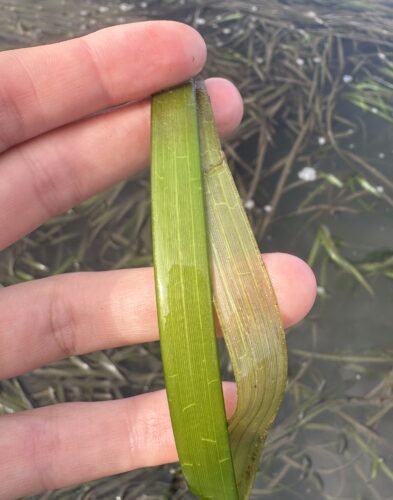Salmon
Birds
Salmonids
Monitoring
Progress

- Pre-assessment (Completed)
- Project Design (Completed)
- Project Started (In Progress)
- Project Finished
- Monitoring Active
From Concern to Action: A Long-Term Monitoring Plan for Seagrass in Tillamook Bay
As part of our broader Monitoring Strategy, TEP launched a long-term eelgrass monitoring program in Tillamook Bay in response to growing community concern and the potential for a widespread seagrass die-off. This multi-year study is focused on collecting high-quality, unbiased data to build a reliable baseline of seagrass coverage.
Establishing this baseline takes time, but it is essential for helping decision-makers assess potential impacts on the bay’s ecosystem. As a nonregulatory partner in Tillamook County, TEP’s role is to provide sound, objective science that supports informed decisions and addresses the concerns of our community.
Click the button to explore an interactive map displaying the past 2 years of seagrass drone imagery.

- Seagrasses are the only fully submerged marine plants.
- They create their own habitat as a foundational species. This means that their presence is relied upon by wildlife.
- The habitat they create is important nursery habitat for juvenile stages of critical species like salmon (coho), Dungeness crab, and pacific herring.
- It is an important food source for the black brant, a sensitive migratory bird species listed by Oregon Department of Fish and Wildlife (ODFW).
- Its natural lifecycle involves consistently shedding leaves with faster growth in the spring and summer.

- Tillamook Bay’s seagrass beds are primarily one species, Eelgrass (Zostera marina).
- This can make them more vulnerable because a single species can be susceptible to the same stressors. For example, if the water is really warm for a few days, there isn’t another species that is more resilient to warm water.
- Tillamook Bay has one of the largest populations of seagrass on the Oregon Coast because it is a large shallow bay.
- It creates habitat for the food sources of other birds, making Tillamook Bay a critical stop along the Pacific Flyway.
If you have more questions or concerns please reach out to info@tbnep.org.